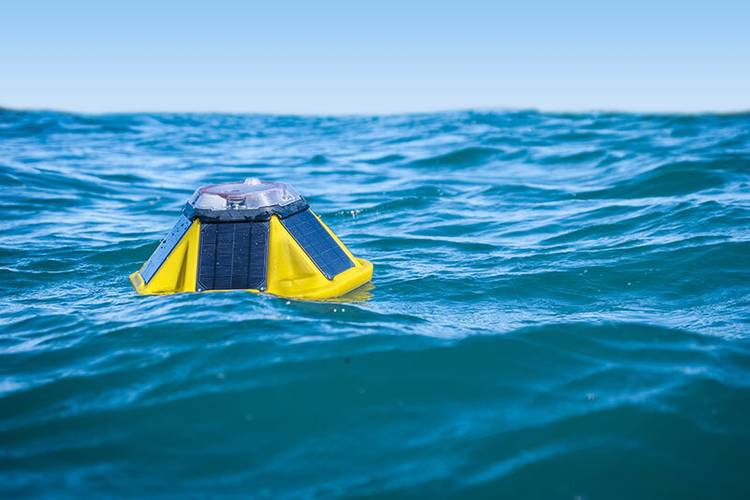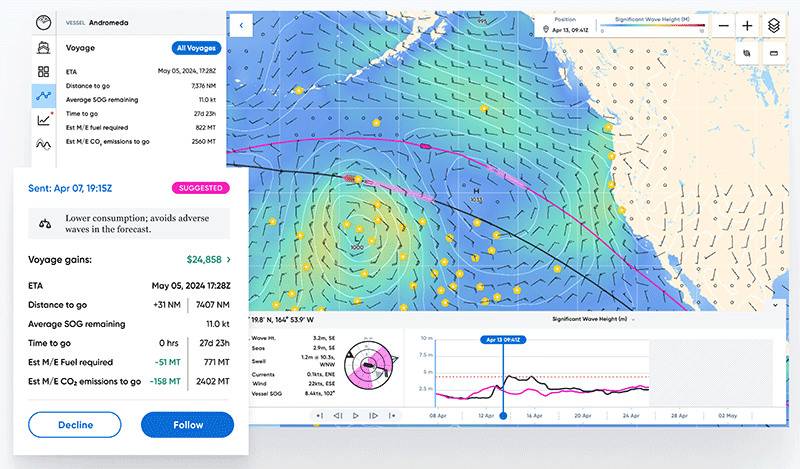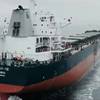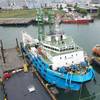MOL Picks Dynamic Voyage Optimization Tech to Cut GHG Emissions
Mitsui O.S.K. Lines (MOL) has decided to introduce the dynamic voyage optimization platform Wayfinder, developed by Sofar Ocean, to its operating vessels, aiming to reduce greenhouse gas (GHG) emissions by improving fuel efficiency.
Wayfinder provides the optimal speed and route for safe and efficient navigation to each ship daily.
These recommendations leverage real-time weather forecasts based on information from Sofar's global network of ocean sensors, the ship's fuel efficiency calculated using a data-driven model, and market and safety constraints.
The ocean sensor Spotter buoy, developed by Sofar, collects ocean data such as wave spectra, wind, sea surface temperature, and atmospheric pressure in real time, and is used by various government agencies.
By combining the collected ocean data with weather data from satellites and other sources, Sofar's weather forecasts, including wave field predictions, are up to 50% more accurate than other operational forecasts. Waves have a significant impact on the efficient operation of a ship, and Sofar's weather forecasts are expected to be impactful in this regard.
In a trial with 40 of MOL Group's operating vessels, it has confirmed an average fuel/GHG emission reduction of about 6% per voyage.
More than 80% of the captains participating in the trial have highly evaluated the convenience of the platform and accuracy of the weather and ocean forecasts.
Therefore, MOL has decided to introduce it to its group's operating vessels as a platform that contributes to further safe and efficient navigation.










